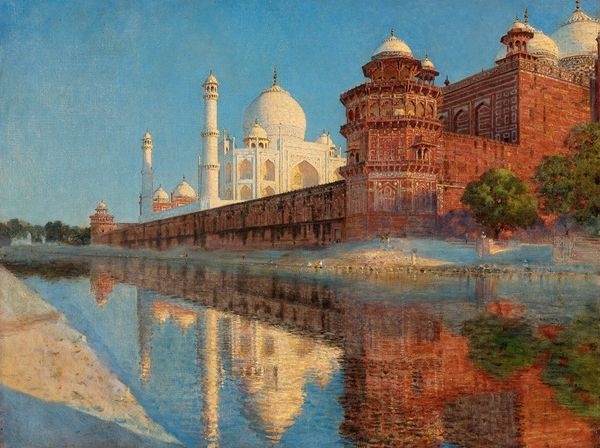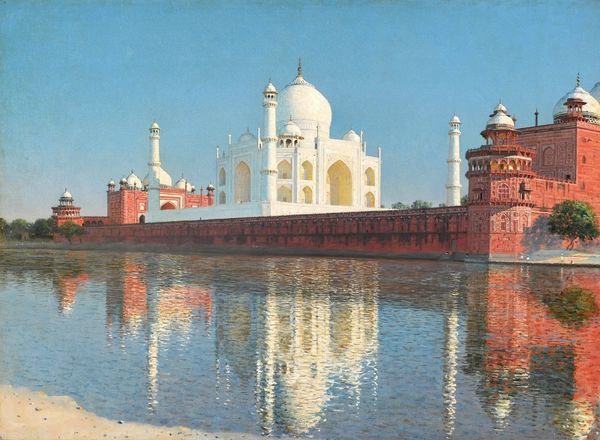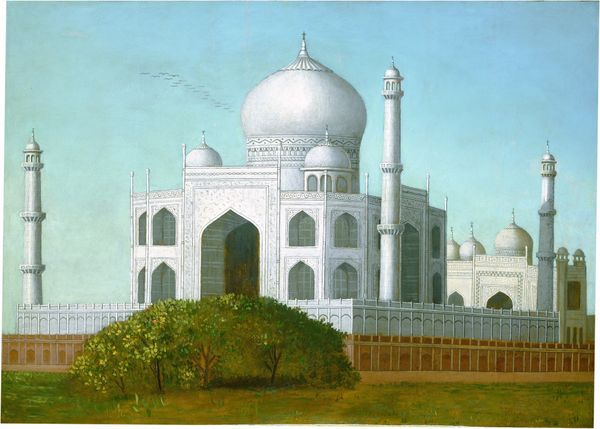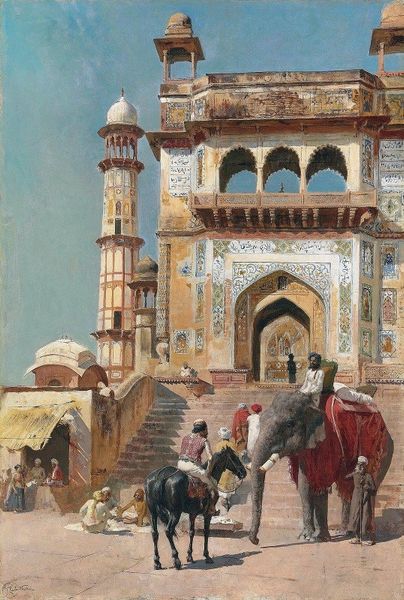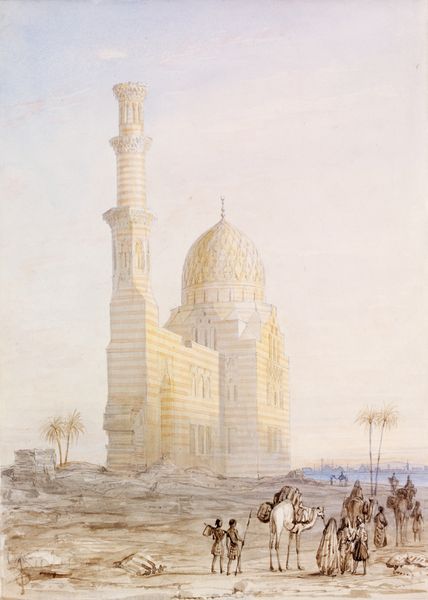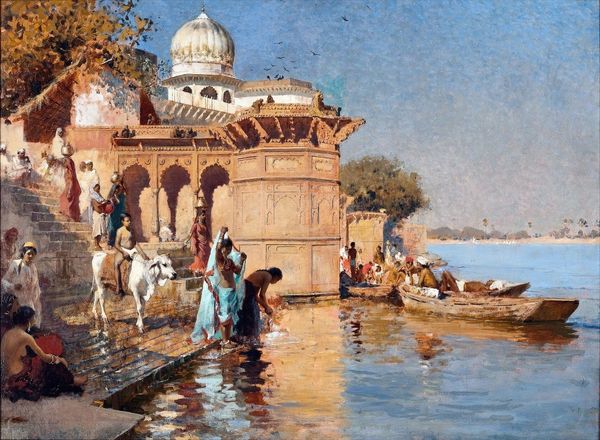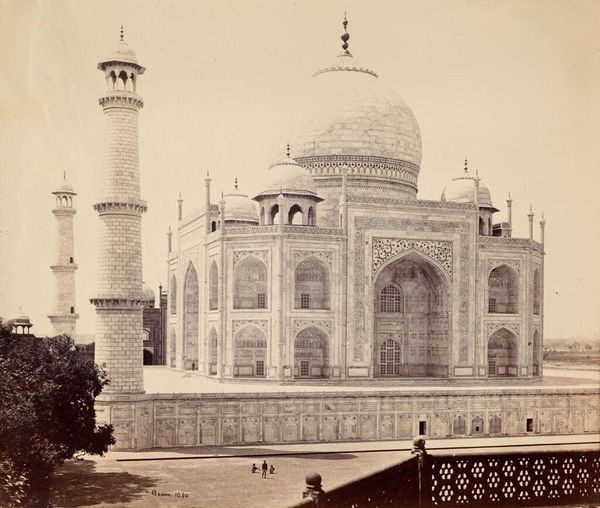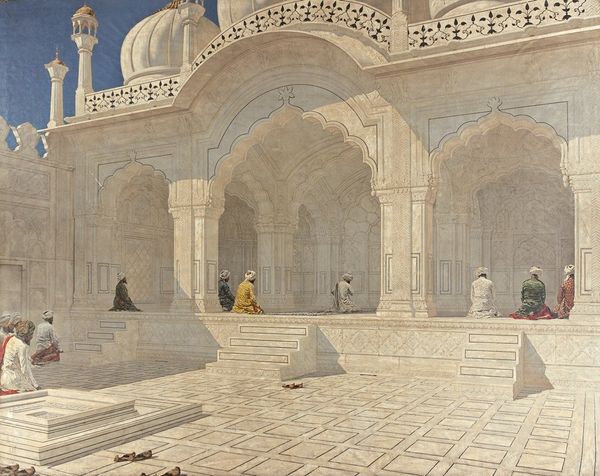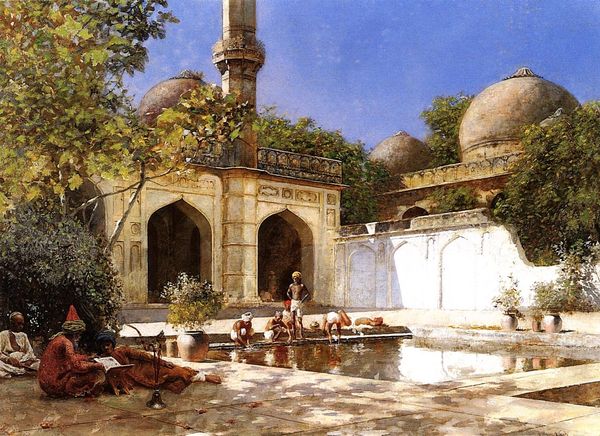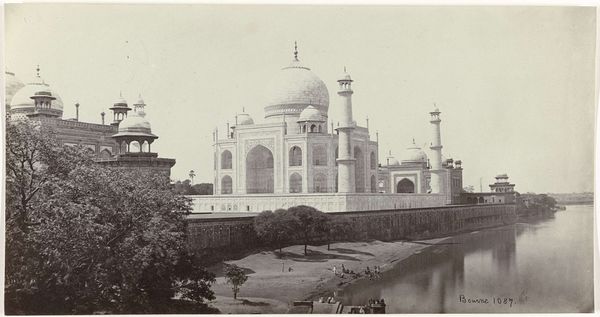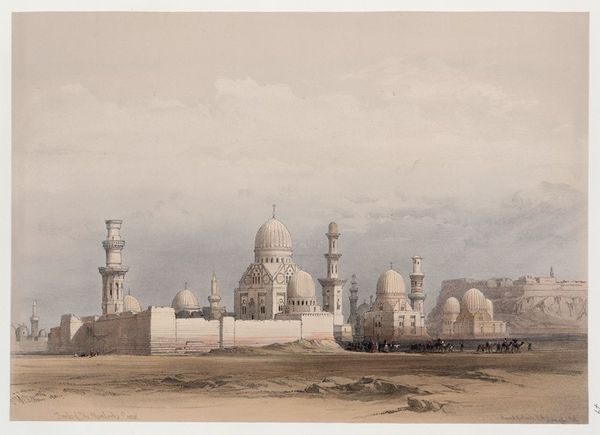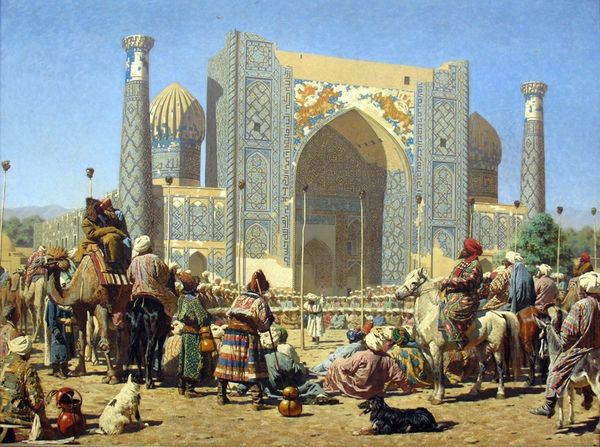
painting, oil-paint, architecture
#
painting
#
oil-paint
#
landscape
#
oil painting
#
orientalism
#
cityscape
#
islamic-art
#
history-painting
#
architecture
#
realism
Copyright: Public domain
Art Historian:Hello! Editor: Right, so we're looking at "Taj Mahal Mausoleum," painted in 1876 by Vasily Vereshchagin. It’s an oil painting that captures this famous building. The first thing that strikes me is how still everything feels, almost frozen in time. What's your initial take on this? Art Historian: It’s interesting you say that, given Vereshchagin’s reputation as a war artist. This serenity is a notable contrast. Seeing the Taj Mahal, painted through a Western gaze during that period, inevitably draws my attention to the concept of Orientalism. How do you think the artist’s cultural background might influence our interpretation of the work? Editor: I guess because he is Russian, not Indian, the Taj Mahal becomes a spectacle? Like a symbol of this exotic, faraway place he is showing to a European audience. Art Historian: Precisely. Consider the late 19th century. This was a period of intense colonial expansion. Images like these weren't just landscapes; they were visual tools that shaped perceptions of other cultures. Does this painting, in its stillness, romanticize or perhaps even subtly 'other' India and its people for a Western audience? Editor: It’s pretty, almost like a postcard view, so I suppose it's selling an idea of India? Rather than showing what it's really like. And maybe that is why there aren't many people milling around... I mean it's clearly posed from a distance for a certain effect. Art Historian: That’s a key point. By focusing solely on the architectural marvel, the artist may be downplaying the everyday life and social realities surrounding it. And what impact do you think this artistic choice would have on how the Russian public might have understood India at the time? Editor: That's something to consider. It gives a very specific idea of this culture based on only one building, viewed through the lens of colonialism. I won't see this painting the same way again. Art Historian: Exactly, analyzing art in its historical context opens a window into the social and political dialogues of its time. Editor: Thanks!
Comments
Join the conversation
Join millions of artists and users on Artera today and experience the ultimate creative platform.
